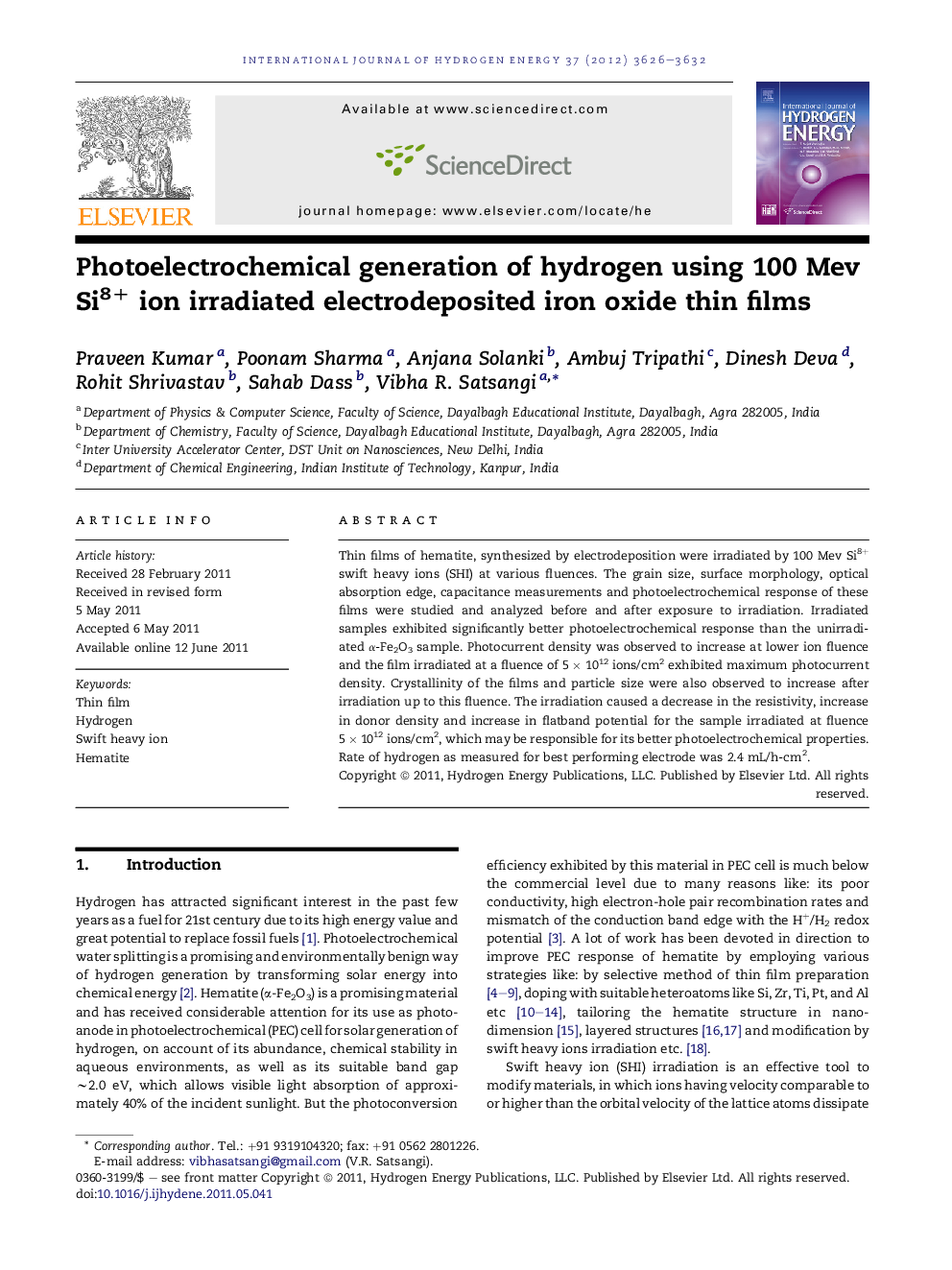| Article ID | Journal | Published Year | Pages | File Type |
|---|---|---|---|---|
| 1282372 | International Journal of Hydrogen Energy | 2012 | 7 Pages |
Thin films of hematite, synthesized by electrodeposition were irradiated by 100 Mev Si8+ swift heavy ions (SHI) at various fluences. The grain size, surface morphology, optical absorption edge, capacitance measurements and photoelectrochemical response of these films were studied and analyzed before and after exposure to irradiation. Irradiated samples exhibited significantly better photoelectrochemical response than the unirradiated α-Fe2O3 sample. Photocurrent density was observed to increase at lower ion fluence and the film irradiated at a fluence of 5 × 1012 ions/cm2 exhibited maximum photocurrent density. Crystallinity of the films and particle size were also observed to increase after irradiation up to this fluence. The irradiation caused a decrease in the resistivity, increase in donor density and increase in flatband potential for the sample irradiated at fluence 5 × 1012 ions/cm2, which may be responsible for its better photoelectrochemical properties. Rate of hydrogen as measured for best performing electrode was 2.4 mL/h-cm2.
► Irradiation of 100 Mev Si8+ ions on hematite thin films showed improved PEC response. ► Irradiation affected the crystallinity, donor density, visible light absorption. ► 3.0 mA/cm2 photocurrent were exhibited by hematite irradiated at 5 × 1012 ions/cm2. ► Rate of hydrogen as measured for best performing electrode was 24 L/h-m2. ► Highest flat band potential favors the best PEC response of Si irradiated sample.
